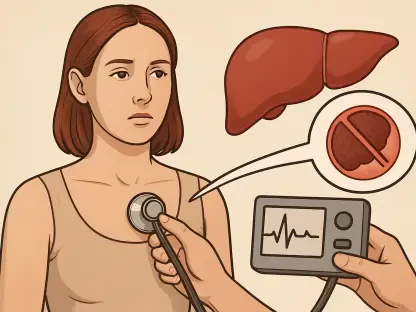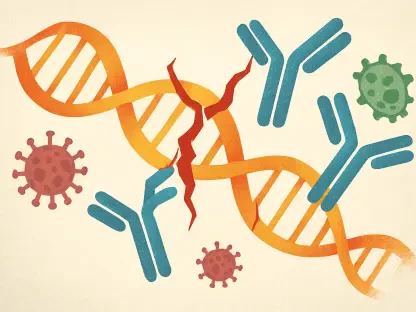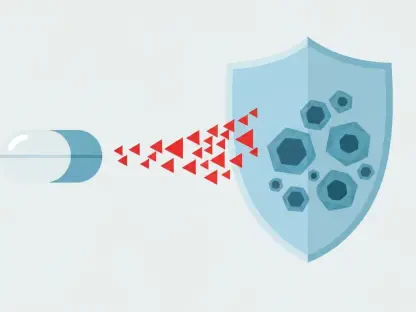Ivan Kairatov is a renowned expert in biopharma, with a strong track record in research and development, particularly in technological innovations that drive pharmaceutical advancements. With his deep understanding of these domains, Ivan offers insights into groundbreaking studies and developments, including the recent findings in prostate cancer treatment. Our conversation delves into these key themes, exploring the implications of the Amplitude study, the mechanisms of new treatments, and future directions in cancer therapy.
Can you explain the significance of the Amplitude study released at the American Society of Clinical Oncology’s meeting?
The Amplitude study represents a pivotal development in prostate cancer treatment. It highlights the effectiveness of J&J’s Akeega in slowing disease progression, particularly in men with BRCA mutations at earlier stages. This study could significantly expand treatment options for patients who might otherwise face more aggressive disease without such intervention, shedding light on the potential of genetics-guided cancer therapy.
What are the active ingredients in J&J’s Akeega, and how do they function in the context of prostate cancer treatment?
Akeega combines two active ingredients—Zejula and Zytiga. Zejula is a PARP inhibitor that interferes with cancer cell DNA repair mechanisms, while Zytiga inhibits CYP17, a protein involved in testosterone production. By targeting these distinct pathways, Akeega disrupts cancer cell proliferation and survival, offering a powerful approach against prostate cancer, especially in patients with specific genetic mutations.
How does Akeega compare to Zytiga and hormone therapy for patients with BRCA mutations in terms of disease progression and risk reduction?
In patients with BRCA mutations, Akeega has shown a remarkable capacity to delay disease progression and symptoms. When combined with hormone therapy, it nearly halves the risk of progression compared to Zytiga and hormone therapy alone. This positions Akeega as a formidable treatment option that enhances outcomes for these high-risk patients.
What specific challenges do PARP inhibitors face when used as monotherapy in advanced prostate cancer cases?
A significant challenge with PARP inhibitors as monotherapy is the rapid development of resistance. Patients often experience a median time to disease progression of less than a year. Addressing this resistance is critical, as PARP inhibitors could lose their therapeutic effectiveness over time, limiting their utility in long-term cancer management.
How have physicians and drugmakers been exploring the use of PARP inhibitors for early-stage prostate cancer?
There is a concerted effort to study the benefits of introducing PARP inhibitors earlier in the disease course. This proactive approach aims to extend patient survival by leveraging the genetic weaknesses of cancer cells before the disease advances to more resistant stages. Trials like Amplitude are crucial in testing these hypotheses and informing future treatment protocols.
Why do patients with BRCA mutations experience poorer outcomes compared to others in prostate cancer treatment?
BRCA mutations result in faulty DNA repair mechanisms, which lead to more aggressive cancer growth and spread. As a result, patients with these mutations often face challenges in achieving remission with standard treatments. This underlines the necessity for tailored therapies that effectively target these genetic vulnerabilities.
How might the new data from the Amplitude study impact the debate about the role of PARP inhibitors in treating hormone-sensitive prostate cancer?
The Amplitude study opens a new frontier in the discussion of PARP inhibitors, showcasing their potential in combination therapies for hormone-sensitive prostate cancer. The compelling data indicate that earlier intervention with PARP inhibitors could reshape treatment paradigms, making them an integral part of managing genetically predisposed prostate cases.
How did the Amplitude study differentiate between different mutations to homologous recombination repair (HRR) genes?
The study made distinctions between various HRR gene mutations beyond just BRCA. This nuanced analysis is crucial because not all HRR mutations confer the same degree of sensitivity to therapies like Akeega. Understanding these differences helps refine which patients are most likely to benefit from specific treatment regimens.
What were the differences in benefits between patients with BRCA mutations and those with other HRR mutations?
Patients with BRCA mutations derived more pronounced benefits from Akeega than those with other HRR mutations. While the overall patient population saw a reduction in progression risk, the impact was particularly significant among BRCA mutation carriers, underscoring the genetic selectivity and efficacy of the treatment.
Why is expanding Akeega’s use beyond the BRCA-mutated population significant for treatment protocols?
Expanding Akeega’s use could address a broader patient population, increasing therapeutic options for those with various HRR mutations. This approach broadens the landscape of precision medicine, tailoring treatments to the specific genetic profiles of patients and moving towards more personalized healthcare solutions.
What considerations does J&J have regarding discussions with the FDA about expanding Akeega’s approval to a broader population?
J&J must demonstrate the safety and efficacy of Akeega in a broader genetic context. If they can show consistent benefits across various mutations, they stand a better chance of obtaining regulatory approval for an expanded use, contributing to more inclusive and effective treatment strategies for prostate cancer.
Why might some mutations, such as PALB2, not show benefits from Akeega treatment according to the Amplitude study?
Certain mutations like PALB2 potentially lack sensitivity to the mechanisms through which Akeega operates. These differences highlight the complex interplay between specific genetic mutations and drug efficacy, suggesting the need for deeper investigation into alternative strategies for these subsets of patients.
What steps need to be taken to better identify the patients who would benefit most from Akeega if its approval is expanded?
Widespread genetic testing is essential to pinpoint which patients might benefit most from Akeega. Developing predictive biomarkers and advancing genetic profiling technology will enable more accurate patient selection, optimizing treatment outcomes and minimizing unnecessary exposure to ineffective interventions.
Since its approval in 2023, how has Akeega’s market presence evolved, and what are some key partnerships influencing its distribution?
Since its approval, Akeega has progressively established its market presence. Strategic partnerships, particularly with companies like GSK, have been instrumental in enhancing its distribution. These alliances magnify J&J’s reach, facilitating wider adoption and integration of Akeega into clinical practice.
How does GSK’s involvement with Zejula, a component of Akeega, impact J&J’s marketing and distribution rights for the drug in prostate cancer?
GSK’s rights to Zejula, acquired through Tesaro, means that J&J collaborates closely with GSK to ensure efficient distribution of Akeega. This relationship is crucial for maintaining a smooth supply chain and comprehensive marketing strategy, enabling both companies to leverage their strengths optimally.
Do you have any advice for our readers?
Navigating cancer treatment is complex and it’s crucial for patients and caregivers to stay informed about the latest advancements in oncology. Engaging with healthcare providers, understanding genetic implications, and exploring emerging therapies are key steps to making empowered decisions in cancer care.









